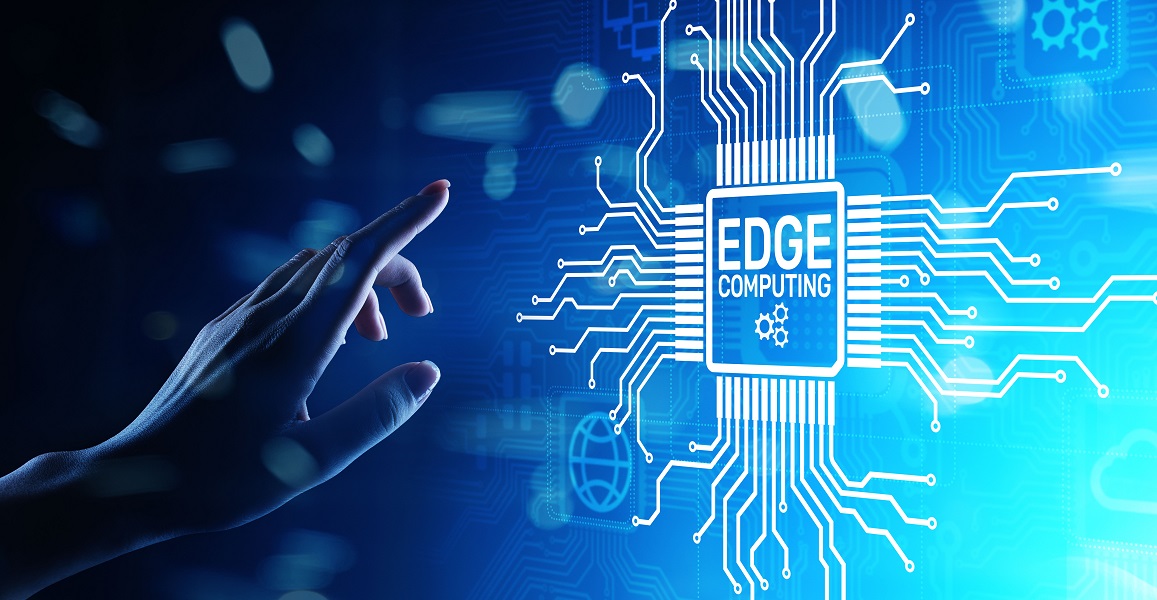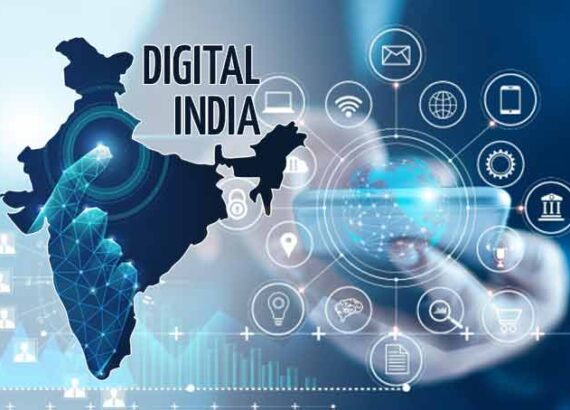1. Introduction to Edge Computing
As technology advances and our digital world becomes increasingly interconnected, the demand for faster and more efficient data processing has become paramount. In response to this need, edge computing has emerged as a revolutionary concept. Edge registering carries calculation and information stockpiling nearer to the wellspring of information age, empowering ongoing examination and faster independent direction. This article explores the fundamental aspects of edge computing, delving into its definition, benefits, architecture, use cases, challenges, and future implications. By the end, readers will gain a comprehensive understanding of edge computing’s significance and its potential to transform various industries and applications.

1.1 What is Edge Computing?
Edge Computing, my tech-savvy friends, is all about bringing the power of the cloud closer to where it’s needed – right on the edge of the network. Instead of relying on a one-size-fits-all approach of sending all our data to a big, distant cloud server, we can process it right where it’s generated – at the edge of the network. It’s like having a mini-cloud in your own backyard.
1.2 Evolution and Background of Edge Computing
Edge Computing didn’t just pop up overnight like a trendy new app. It has been evolving as our digital world has grown increasingly complex. As we embrace the Internet of Things (IoT) and connect more and more devices, it’s become clear that we need a smarter way to handle all that data. Edge Computing has emerged as a solution to address the limitations of traditional cloud computing and meet the demands of our ever-expanding digital universe.

2. Understanding the Concept of Edge Computing
2.1 Defining Edge Computing
Alright, let’s get down to business. Edge Computing is all about distributing computational power closer to where the data is generated. Instead of sending every piece of information to a centralized cloud, we process it right on the spot. It’s like having a brain right in your fingertips, making quick decisions in real-time.
2.2 Contrasting Edge Computing with Cloud Computing
Now, let’s talk about how Edge Computing differs from its big brother, Cloud Computing. While cloud computing relies on centralized data centers to handle all the heavy lifting, Edge Computing pushes that workload to the edges of the network. It’s like the difference between going to a crowded concert and having a VIP suite right by the stage – everything happens faster and with less congestion.
2.3 Key Principles and Characteristics of Edge Computing
So, what makes Edge Computing tick? It’s all about speed, agility, and efficiency. By processing data closer to its source, we reduce latency and make real-time decision-making possible. Edge Computing is also flexible and scalable, adapting to the needs of different devices and services. Plus, it’s resilient – even if the connection to the cloud goes down, the show must go on!

3. Benefits and Advantages of Edge Computing
3.1 Enhanced Performance and Reduced Latency
Picture this: you’re streaming your favorite show on a rainy Sunday and suddenly, the video freezes. Frustrating, right? Well, with Edge Computing, that’s a thing of the past. By processing data at the edge of the network, we minimize the time it takes for information to travel back and forth, resulting in lightning-fast performance and a seamless streaming experience.
3.2 Improved Reliability and Availability
Life is full of surprises, but downtime shouldn’t be one of them. With Edge Computing, we can ensure that critical applications and services stay up and running, even in the face of network disruptions. By distributing computing power across multiple edge devices, we create a more resilient and fault-tolerant system. So, wave goodbye to those frustrating “connection lost” messages!
3.3 Enhanced Security and Privacy
Nobody likes the idea of their personal data floating around in a giant cloud, vulnerable to cyber threats. With Edge Computing, we can keep things more secure and private. By processing sensitive data locally, we reduce the risk of data breaches and maintain better control over our information. It’s like having a bouncer at the door of your virtual club – keeping the bad guys out!
If you want to build your website in an affordable price contact: www.nextr.in

4. Key Components and Architecture of Edge Computing
4.1 Edge Devices and Sensors
Edge Computing is all about the devices and sensors that make it happen. Think of smart appliances, industrial machinery, autonomous vehicles, and all the other gizmos that generate data. These edge devices and sensors are the foundation of the Edge Computing ecosystem, capturing and transmitting information to be processed right at the edge.
4.2 Edge Computing Infrastructure
Just like a city needs a solid infrastructure to thrive, Edge Computing relies on a robust network to connect all the edge devices and sensors. This infrastructure includes gateways, routers, and local servers that enable seamless communication between the edge and the cloud. It’s like building highways and bridges for our data to travel on.
4.3 Edge Computing Software Frameworks
Last but not least, we have the software frameworks that tie everything together. These frameworks provide the tools and algorithms for processing data at the edge, making intelligent decisions, and coordinating with the cloud when needed. It’s like having a well-trained team of digital engineers working tirelessly behind the scenes to make Edge Computing a reality.

5. Use Cases and Applications of Edge Computing
5.1 Internet of Things (IoT)
Edge computing and IoT go together like peanut butter and jelly. With the explosive growth of connected devices, edge computing provides the necessary infrastructure to process data closer to the source, minimizing latency and optimizing performance. From smart home devices to industrial sensors, edge computing enables real-time data analysis, decision-making, and automation.
5.2 Smart Cities and Infrastructure
Imagine a city where streetlights automatically adjust based on real-time traffic patterns, waste management systems optimize garbage collection routes, and parking spaces are quickly and efficiently allocated. Edge computing makes all of this possible. By bringing data processing closer to the physical devices that make up a city’s infrastructure, edge computing enables smarter, more efficient management of resources, leading to improved quality of life for citizens.
5.3 Autonomous Vehicles
Self-driving cars may seem like something out of a sci-fi movie, but they are becoming a reality thanks, in part, to edge computing. Autonomous vehicles generate enormous amounts of data that need to be analyzed in real-time to ensure safe and reliable operation. Edge computing allows vehicles to process data locally, reducing reliance on external networks and enabling faster decision-making, ultimately enhancing the safety and efficiency of self-driving technology.
If you want to build your website in an affordable price contact: www.nextr.in

6. Challenges and Limitations of Edge Computing
6.1 Connectivity and Network Constraints
While edge computing offers many benefits, it also faces challenges, especially when it comes to connectivity. Not all devices or locations have reliable network connections, making it difficult for edge computing systems to function optimally. Additionally, the lack of standardized protocols and interoperability issues can complicate the integration of edge computing into existing infrastructures.
6.2 Scalability and Management Complexity
As edge computing deployments grow larger, managing and scaling these complex systems can become quite challenging. Coordinating updates, security measures, and ensuring seamless communication between edge devices and central systems requires careful planning and robust management frameworks. Without proper management, edge computing can quickly become overwhelming.
6.3 Data Governance and Security Risks
With data being processed and stored at the edge, ensuring data governance and security becomes paramount. Managing and protecting data at the edge requires robust encryption, access controls, and monitoring to mitigate security risks.

7. The Future of Edge Computing
7.1 Growth and Expansion of Edge Computing
Edge computing is poised for significant growth in the coming years. As IoT devices continue to multiply and the demand for real-time data processing increases, edge computing will become more prevalent across industries. We can expect to see edge computing infrastructure expanding to support a wide range of applications, from healthcare and retail to manufacturing and entertainment.
7.2 Integration with Emerging Technologies
Edge computing is not an isolated technology but a piece of the larger technological puzzle. As emerging technologies like 5G, artificial intelligence, and augmented reality continue to evolve, we can expect to see tighter integration with edge computing. This integration will enable even more advanced and immersive experiences, creating a more connected and intelligent world.
If you want to build your website in an affordable price contact: www.nextr.in

8. Embracing the Potential of Edge Computing
Edge computing holds immense potential for transforming how we process and utilize data. By bringing computation closer to the source, edge computing offers faster response times, improved efficiency, and enhanced user experiences. While there are challenges to overcome, the benefits far outweigh the limitations. As we embrace the power of edge computing, we are opening doors to a future where technology seamlessly integrates into our daily lives, making them smarter and more efficient. So, let’s roll up our sleeves and dive into the remarkable world of edge computing.

FAQ
1. How does edge computing different from cloud computing?
While cloud computing centralizes data processing in remote servers, edge computing brings computation and data storage closer to the source of data generation. This proximity reduces latency and allows for real-time analysis, making it ideal for applications requiring immediate responses.
2. What are the key benefits of edge computing?
Edge computing offers several advantages, including enhanced performance, reduced latency, improved reliability, and increased security. By processing data at the edge of the network, it minimizes the need for long-distance data transfers and enables faster decision-making in critical applications.
3. What are some typical use cases for edge computing?
Edge computing finds applications in various fields. It is particularly useful in Internet of Things (IoT) deployments, where it enables real-time data analysis and quicker response times. It is also employed in smart cities and infrastructure projects to optimize resource management and enable intelligent services. Additionally, edge computing plays a crucial role in autonomous vehicles, enabling onboard processing for faster decision-making and enhancing passenger safety.
4. What challenges does edge computing face?
Despite its vast potential, edge computing faces challenges such as connectivity constraints, scalability issues, and data governance concerns. Ensuring reliable and robust connectivity at the edge can be difficult, especially in remote or unpredictable environments. Managing and scaling edge infrastructure also requires careful planning. Furthermore, processing sensitive data at the edge raises security and privacy concerns that need to be addressed to maintain data integrity and protect user privacy.

Conclusion
Edge computing has emerged as a game-changing technology that addresses the limitations of traditional cloud computing. Its ability to process data closer to the source brings numerous benefits, including lower latency, improved reliability, and enhanced security. As its adoption continues to grow, edge computing is set to revolutionize industries such as IoT, smart cities, and autonomous vehicles. However, challenges like connectivity constraints and data governance must be addressed for widespread implementation. With its promising future and potential for innovation, embracing edge computing opens up a world of possibilities for faster, more efficient, and scalable data processing. It is time for businesses and individuals to harness the power of edge computing and unlock its full potential.
Edge computing refers to the practice of bringing computing power and data storage closer to the location where it is needed, rather than relying solely on centralized cloud servers. This allows for faster processing, reduced latency, and improved performance in real-time applications. In essence, edge computing brings the capabilities of the cloud closer to devices and enables them to operate more efficiently and effectively.



















